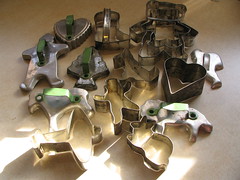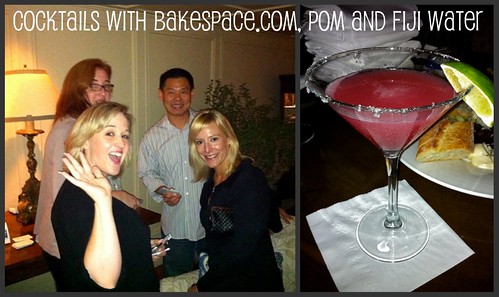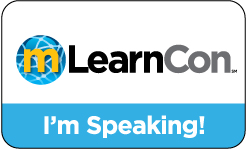 After 6 years of podcasting and a deep immersion into the New Media world I find myself wondering if we all need to stop listening to New Media pundits and just GET ON WITH IT!
After 6 years of podcasting and a deep immersion into the New Media world I find myself wondering if we all need to stop listening to New Media pundits and just GET ON WITH IT!
As with any new trend, meme, idea, service, product, whatever — there will always be those who think themselves experts in exactly how it should be done. You must post 1.4 Twitter messages each day, each being only 120 characters (to allow for Retweets and blog 2, 500-word blog posts each day, each with a call to action and comments specifically written to your target niche., etc, etc, etc.
Talk about sucking the life out of something!
My own advice, which you are — of course — free to ignore, is to “DO” New Media in whatever way seems fit, in whatever method seems fun or useful, on whatever time frame fits your schedule, directed at whatever audience you care to address. JUST DO IT!
Following too much advice can be more damaging than following too little. Each new pundit, each new expert hones and grinds New Media in their image. They take all that was new and exciting about New Media and turn it into yet another widget that can be commoditized and sold. They reduce the power of these new tools down to a lowest common denominator that seeks to serve everyone, but only seeks to serve them with mediocrity.
What good is it if you simply get better and better and doing what everyone else is doing? If you use New Media tools like everyone else in the crowd you become just one more anonymous figure within that crowd. New Media gives us the ability to stand out from the crowd, find our audience and make a difference in the world. Why squander it being the same as everyone else?
Every new idea goes through this phase? Goth was cool and edgy, now it can be bought in the mall. Punk music was loud and downright dangerous, now its commoditized just like Top 40 pop. Blogging used to be cool and cutting edge, now many do it with the same energy and excitement as a burned out accountant might bring.
Start with yourself when you develop your New Media projects. Sure, you can find some interesting ideas among the pundits, but when the advice starts to make everything look the same you would do better to think about how you can make your work different. Different is where new things happen. Different is where big success lies. Different is what keeps you from being swallowed by the big ocean of mediocrity.
What do YOU want out of New Media? How are YOU going to achieve it? What are YOU going to do? After all, if you are just going to do the same as everyone else — why do it at all?


 While attending an online course today via streaming video, I was struck with a problem that I hadn’t really thought about before. In classes where there is a large amount of prep work — installing several software packages, checking connections, trying a sample project — the first session can be quite daunting. Students are eager to dive into the topic and start working with the tools or information. If, instead, they are presented with an hour or more of setup, you are likely to lose them before you ever get started. I know for myself, today’s class seemed interminable. In fact, they may have lost me for the rest of the class. I will probably give it one more try, but if it isn’t significantly better, I will probably abandon the class in favor of more self-directed learning through others sources.
While attending an online course today via streaming video, I was struck with a problem that I hadn’t really thought about before. In classes where there is a large amount of prep work — installing several software packages, checking connections, trying a sample project — the first session can be quite daunting. Students are eager to dive into the topic and start working with the tools or information. If, instead, they are presented with an hour or more of setup, you are likely to lose them before you ever get started. I know for myself, today’s class seemed interminable. In fact, they may have lost me for the rest of the class. I will probably give it one more try, but if it isn’t significantly better, I will probably abandon the class in favor of more self-directed learning through others sources. Over the last couple of weeks, I have been asked this question more than a few times, both face-to-face and via email/Twitter. The on-going privacy policy battles with Facebook have turned off a lot of people on the large (and growing larger) service, but for the foreseeable future, if you leave Facebook, you might just be reducing your social media effectiveness.
Over the last couple of weeks, I have been asked this question more than a few times, both face-to-face and via email/Twitter. The on-going privacy policy battles with Facebook have turned off a lot of people on the large (and growing larger) service, but for the foreseeable future, if you leave Facebook, you might just be reducing your social media effectiveness. One of the most common questions I get asked as a New Media consultant is “How do I live video stream my event?” The fact is, the technology part of the live streaming equation is easier than ever before, but it still requires a little bit of equipment and, more importantly, good planning to get your live video stream up and running.
One of the most common questions I get asked as a New Media consultant is “How do I live video stream my event?” The fact is, the technology part of the live streaming equation is easier than ever before, but it still requires a little bit of equipment and, more importantly, good planning to get your live video stream up and running. I will be presenting the workshop below during the
I will be presenting the workshop below during the 

